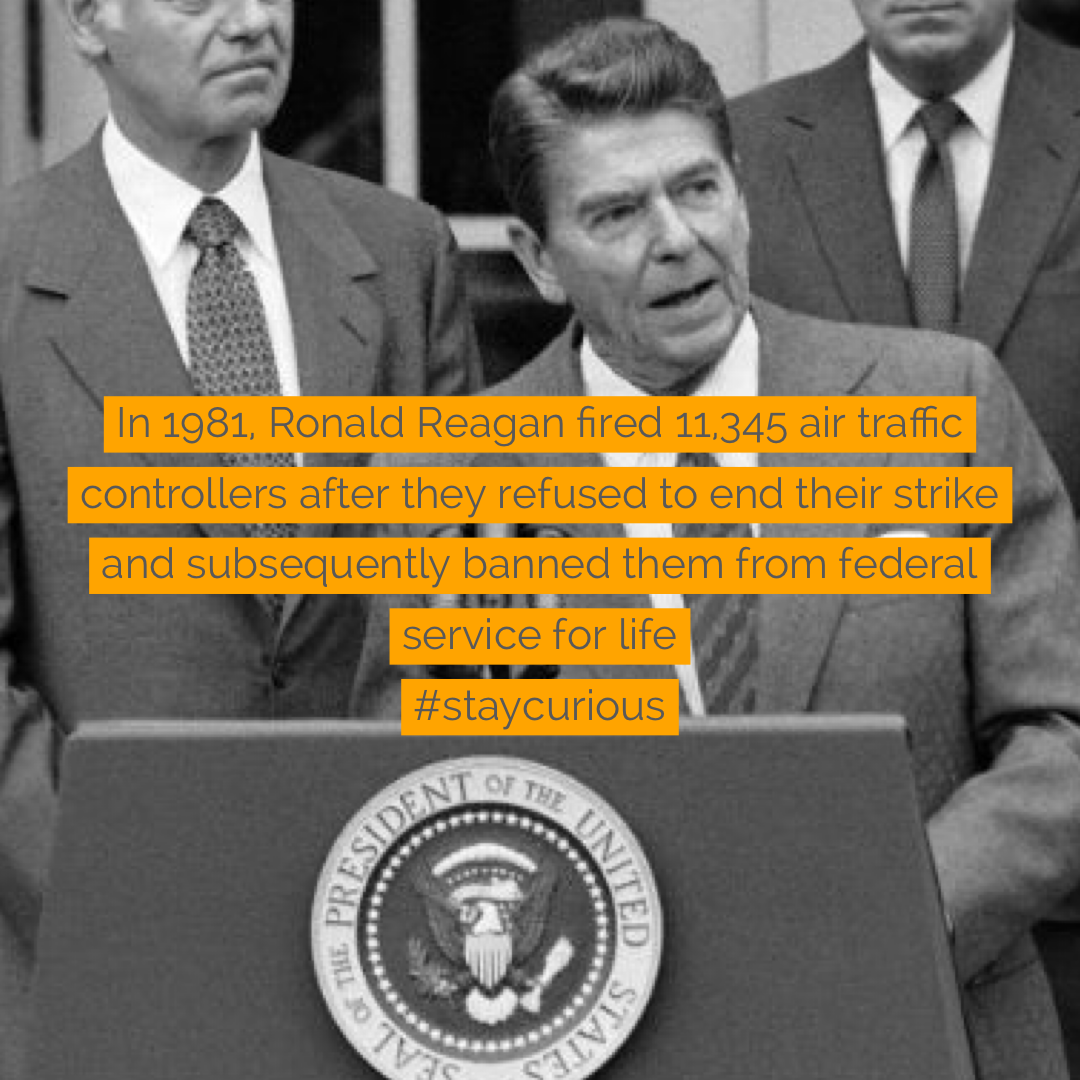In 1981, Ronald Reagan fired 11,345 air traffic controllers after they refused to end their strike and subsequently banned them from federal service for life

At 7 a.m. on August 3, 1981, the union declared a strike, seeking better working conditions, better pay, and a 32-hour workweek (a four-day week and an eight-hour day combined). In addition, PATCO wanted to be excluded from the civil service clauses that it had long disliked. In striking, the union violated 5 U.S.C. (Supp. III 1956) 118p (now 5 U.S.C. § 7311), which prohibits strikes by federal government employees. After supporting PATCO's effort in his 1980 campaign, Ronald Reagan declared the PATCO strike a "peril to national safety" and ordered them back to work under the terms of the Taft–Hartley Act. Only 1,300 of the nearly 13,000 controllers returned to work.[5] Subsequently, at 10:55 a.m., Reagan included the following in a statement to the media from the Rose Garden of the White House: "Let me read the solemn oath taken by each of these employees, a sworn affidavit, when they accepted their jobs: 'I am not participating in any strike against the Government of the United States or any agency thereof, and I will not so participate while an employee of the Government of the United States or any agency thereof.'"[7] He then demanded those remaining on strike return to work within 48 hours, otherwise their jobs would be forfeited. At the same time, Transportation Secretary Drew Lewis organized for replacements and started contingency plans. By prioritizing and cutting flights severely, and even adopting methods of air traffic management that PATCO had previously lobbied for, the government was initially able to have 50% of flights available.[5]
On August 5, following the PATCO workers' refusal to return to work, Reagan fired the 11,345 striking air traffic controllers who had ignored the order,[8][9] and banned them from federal service for life. In the wake of the strike and mass firings, the FAA was faced with the task of hiring and training enough controllers to replace those that had been fired, a hard problem to fix as, at the time, it took three years in normal conditions to train a new controller.[2] They were replaced initially with non-participating controllers, supervisors, staff personnel, some non-rated personnel, and in some cases by controllers transferred temporarily from other facilities. Some military controllers were also used until replacements could be trained. The FAA had initially claimed that staffing levels would be restored within two years; however, it took closer to ten years before the overall staffing levels returned to normal.[2] PATCO was decertified by the Federal Labor Relations Authority on October 22, 1981. The decision was appealed.[10]
Some former striking controllers were allowed to reapply after 1986 and were rehired; they and their replacements are now represented by the National Air Traffic Controllers Association, which was organized in 1987 and had no connection with PATCO. The civil service ban on the remaining strike participants was lifted by President Bill Clinton in 1993.[11]
@Curionic
#staycurious






